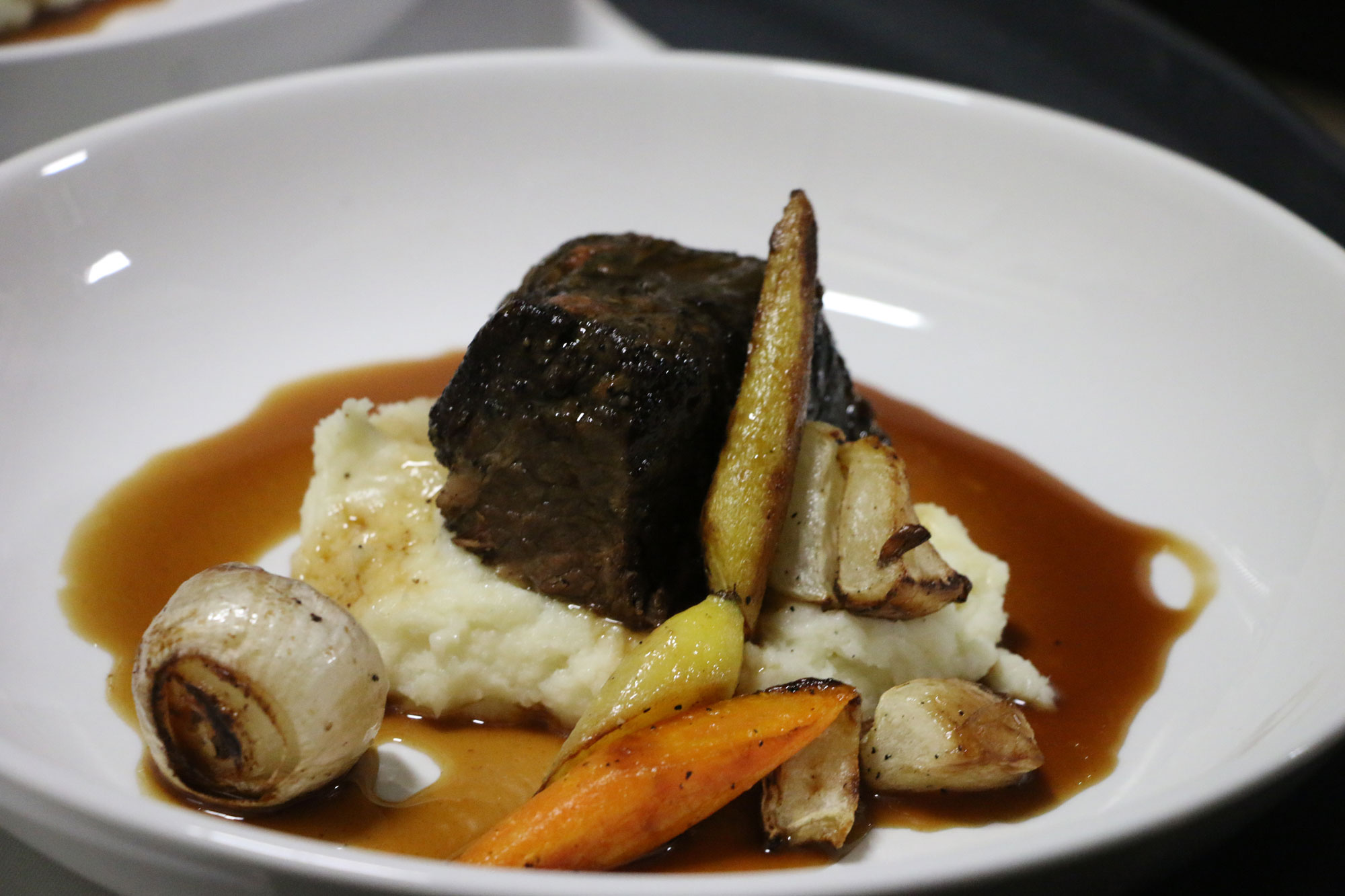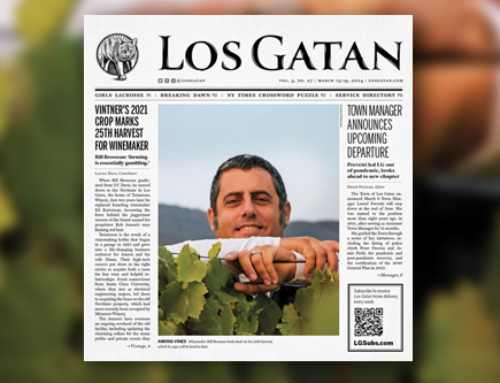Nadiv’s Role at Testarossa
By Laura Ness
Read Part I to learn about Chef Nadiv Geiger’s background before working at Testarossa.
Testarossa is not a restaurant.
Our biggest challenge, and yet also a benefit, is the fact that Testarossa is not a restaurant. We are different. Since we have an off-site kitchen and are acting as an in-house catering company, we have to view ourselves differently from a restaurant. The supply chain, rotation of ingredients and the final execution, are all reimagined to give our guest the best experience possible. With that, it is imperative that we create menus that our guests are going to truly enjoy, and allow them to choose the menu that best suits them so we can tailor the experiences to their expectations.
From a menu execution point, the main difference is we know exactly what and how much our guests are eating, not unlike a tasting-menu style restaurant (i.e., Atelier Crenn, Saison, Quince, The French Laundry). This is different from a traditional restaurant where, whether or not you have a certain number of reservations, you have no idea what the guests are going to order.
We see much less waste.

Culinary Team
By letting guests choose a menu in advance, it benefits us greatly in ways they don’t perceive. We are therefore more sustainable and responsible in our use of ingredients. However, none of this would be possible without the incredible staff I have. The skill and care of our cooks and administrators make what could be an overwhelming challenge for some, a simple logistical hurdle for me.
I basically act like a “Reverse Sommelier.”
Another major difference is that since we are a winery first, the menus are tailored to the wine experience. I plan our menus around highlighting and emphasizing our wine’s ability to pair with certain types of foods. In a traditional restaurant setting, chefs usually do not have to concern themselves with this, as there is generally a Sommelier who will take on the task of curating wines that will pair with the food.
We are constantly creating something new.
For our club member events like Grower’s Lunches and Soiree’s, I create locally source, hyper seasonal inspired menus that are paired to specific Testarossa wines.

Taste of Testarossa
The Taste of Testarossa (Testarossa University) education based class is where we teach guests about the nuances of food and wine pairing using small seasonal bites that are inspired by classic flavor combinations from around the world.
In Wine Bar 107, we are supporting California’s incredible variety and quality of artisanal salumi and cheese. We seek out and source California producers and put them up next to the highest quality of other domestic and international versions of the same product, to showcase what we have here. We change the selections regularly to offer guests variety and to highlight our wines ability to pair with a vast variety of foods.
We are a scratch kitchen: we make nearly everything we can from scratch.
For our events and banquets, we create seasonally inspired menus sourcing from the same purveyors of food that some of the best restaurants in the Bay source from. With every effort we source, wherever possible, only from sustainable, responsible sources. We also support humane and environmentally friendly farming practices and sustainable fishing practices. All of this care in sourcing shows in the final quality of the food we serve.
The new kitchen at the winery is going to be a game changer!
I’m also really looking forward to the plans we have for a new kitchen at the winery. It will be a game changer for us and open so many possibilities. We already do great food for our events department, and with a kitchen on-site it will allows us to do just that much more. Even the prospects for what Wine Bar 107 could become are incredibly exciting, not including how much more we could potentially expand our education based experiences.
My food philosophy for cuisine at Testarossa starts and ends with our wine.
I am really fortunate that Rob and Diana Jensen and Alex Lewis (director of hospitality) have allowed me to be as creative as I want. This allows me to create my own philosophy for the food at Testarossa, which basically means our cuisine starts and ends with our wine. Because I am “classically trained,” which means French and Italian techniques play a large role in the foundation of my cooking style, when I analyze wine, I tend to focus on the cuisines of the Mediterranean. From there, I emphasize our terroir and food history in California, the seasonality of ingredients and what is local to the west coast.

Pinot Noir Braised Short Rib
I also take lots of inspiration from my family and heritage.
As Israel has a coast on the Mediterranean sea, it plays a strong role in my menu development, with some touches from Romanian and Hungarian cuisine. I also add in touches from my personal experiences: one of our guests favorite is the horseradish and parmigiano-reggiano laced mashed potatoes we serve with our Pinot Noir braised short ribs which are actually inspired by a request from my fiancee one evening for steak and mashed potatoes with horseradish cream sauce.
Food pairings always start with analyzing the wine.
When pairing, I first start by tasting and analyzing the wines, then comparing my notes to our winemaker’s notes. With the technical aspects of the wine and the flavor profile, I then go back to the Testarossa food philosophy I’ve created and start building our dishes from there. I use the technical aspects of the wines first: body, alcohol, tannin, dry/sweetness, acidity, to determine the style of dish and then use the flavor profile to direct me from there.
Some of the dishes we serve that showcase this process:
-

Roasted Market Fish
Salmon with tomato stewed Umbrian lentils, preserved lemon and black garlic sauce
- Za’atar marinated 38-N farms chicken breast, with braised leg meat, roasted baby summer squash, and preserved lemon mostarda
- Roasted prime coulotte steak, with duck fat potato, hen of the woods mushrooms, roasted cipollini onion and Testarossa Pinot Noir Bordelaise sauce
- Shrimp “tostada” with hummus, crispy garbanzo beans, green zhoug, (a Middle Eastern condiment made with fresh cilantro, jalapeños, cardamom, cumin and olive oil), shaved breakfast radish and mint
- Roasted market fish, heirloom potatoes, onion consommé, leek soubise, and charred pearl onion petals
- Roasted scallop mousseline, with a leek velouté, and American paddlefish caviar
- Shawarma spiced tofu with Persian style riced cauliflower and shaved seasonal baby vegetables
- Roasted heirloom carrots with Bedouin rice pilaf, tahini, and pine nuts
- Ahi tuna poke, with yuzu-tahini, sesame seeds and puffed rice
- Gem salad with kohlrabi “pico de gallo” and 20-year-aged sherry vinaigrette
And if all that sounds too good to be true, you haven’t yet had the pleasure of sitting down to indulge in one of Nadiv’s excellent pairings yet. Which means, you probably should go out of your way to get in on that dance action, forthwith.





